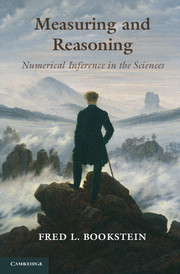Book contents
4 - The Undergraduate Course
from Part II - A Sampler of Strategies
Published online by Cambridge University Press: 05 March 2014
Summary
The principles of abduction and consilience (Part I) combine in a scientific methodology according to which one first searches for surprising numerical patterns in data, “surprising” in the sense that they are not consistent with anybody else's hypothesis, and then constructs and further tests the hypotheses that render these agreements unsurprising. Using these two principles as a scaffolding, most of the important practical themes of the quantitative sciences can be construed as a superstructure built atop them. This chapter surveys the “undergraduate side” of such a syllabus: applications for which the complexity of data or instrumentation resources is relatively restricted. Included are several sets of “lecture notes” that more formally review the algebraic or logical bases of the inferences about to be demonstrated. Collectively these notes constitute a pedagogical experiment in communicating those ideas not by cookbook recipes (if the question on the test is X, use formula Y) but in light of the notions of numerical inference that are this book's principal theme. The examples, in turn, set the stage for the three chapters of Part III, “The Graduate Course,” which will delve deeper into methods and metaphors for problems where the complexity of both data and explanations is more demanding.
The present chapter begins with an example (E4.1) requiring no preamble at all – no statistical algebra, only tables and a truly compelling abductive argument. This is John Snow's famous 1855 demonstration that in two consecutive London cholera epidemics the disease was spread via the city's drinking water.
- Type
- Chapter
- Information
- Measuring and ReasoningNumerical Inference in the Sciences, pp. 115 - 288Publisher: Cambridge University PressPrint publication year: 2014



